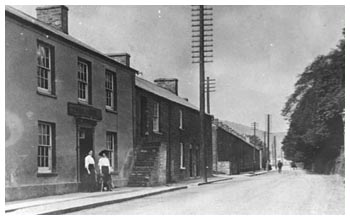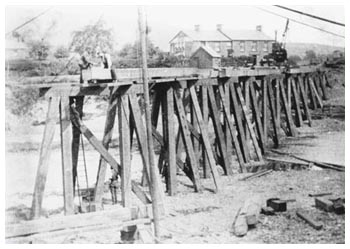
| Rhydyfelin | |
The 1841 tithe map of Eglwysilan parish shows Rhydyfelin consisting of small farms and a few cottages. One of the farms that appear on the map is Ynis Rhydfelen and this may provide evidence in the argument about the derivation of the place name Rhydyfelin. The name Rhydyfelin indicates that a mill on the ford was once there. However others argue that the village should be named Rhydfelen, ‘the yellow ford', probably a reference to the colour of the clay. It was an erroneous belief by some that this was a corruption of Rhydyfelin, which influenced the Ordnance Survey to record it as such in 1885. It's likely that this form arose from a misconception, since there is no record of a mill at this place. |
 |
 |
The tramroad and canal built by him increased the amount of coal taken from tram to canal without hindering the flow of boats on the Glamorganshire Canal. His canal allowed him to transport coal from tram to canal but without disrupting the flow of boats on the main canal. Left: Lock Lewis |
The Doctor's Canal supported at least two boat yards. One was situated near the junction at Dynea while the other was located at the canal bridge at Dyffryn, where the road from the Cardiff to Merthyr turnpike to Glyn Taff crossed the Doctor's Canal. A 55 year old boat builder, William Thomas, is recorded at Dyffryn on the 1841 census. It also shows that another twenty four of Rhydyfelin's inhabitants earned their livings as boat builders, boatmen or lock keepers and that the village's total population was around 140. Right: Construction of the viaduct at Rhydyfelin |
 |
| The Doctor's Canal and Dyffryn boat yard continued to develop in the 1840s with the building of the river bridge to the Treforest Tinplate Works. Finished tinplate left the works by tramroad, crossed the Taff river and ran to the Doctor's canal where there was a wharf with crane. The Dyffryn boat yard was opposite the wharf, near the Francis Crawshay Roundhouse where some of the boat builders and sawyers lived. | |